Recommendations for gardeners: proper soil cultivation for potatoes
Tillage is a key element of cultivation techniques potatoes... The quality and size of the yield of this crop directly depend on the correct choice of a site for planting and competent pre-sowing soil treatment.
Content:
- Choosing a place for planting potatoes
- Weed control
- Top dressing of the soil
- Spring processing
- Autumn processing
Choosing a place for planting potatoes
There is a widespread misconception that potatoes can be planted anywhere and it will grow beautifully. However, there are a number of rules that you can follow to get a good harvest.
Potatoes are a light-loving culture; only a well-lit area is suitable for it.
Without sufficient lighting, the aboveground part will stretch and turn yellow, respectively, for a large harvest you don't have to count. After all, tubers consume what the tops accumulate. As a perennial plant, potatoes, having accumulated the required amount of nutrients in the tubers, will germinate again.
Shaded areas on the south or east side are absolutely unsuitable for growing potatoes. If possible, choose a place for planting, closed from northerly winds, and where the snow melts early. Then you can plant potatoes early, which is one of the conditions for a good harvest. Thus, good illumination is the main criterion when choosing a place for planting potatoes.
An aspect that is important to pay attention to is weak root system potatoes:
- Therefore, for the normal development of the culture, loose, oxygen-enriched soils are needed, which will not interfere with the growth of roots and stolons.
- To get a good harvest, potatoes need to be planted on loamy, fertile, light super-sandy loose soils. Heavy clay soils are not suitable for growing this crop; compost, sand and manure must be added to such land.
- It is important that there is no stagnation of water.
- Lime or wood ash is added to acidic soils at the rate of 15 kg per 100 sq.m.
Try to protect the north and northeast potato area with trees or shrubs. It is desirable that the site has a slope to the south or southwest.
It is advisable to change the planting site every two years, giving the soil a rest.
It is not recommended to plant potatoes in areas where tomatoes, strawberries, peppers or eggplant grew. It is preferable that the precursors of potatoes are cabbage, pumpkin, legumes, cucumbers, carrots, and beets.
Weed control
Weeds not only hinder the development of potatoes and the growth of tubers, they are also carriers of various diseases, worsen the microclimate and create favorable conditions for the occurrence of late blight.
The most tenacious and malicious pest - creeping wheatgrass.
The root system of which grows to a depth of two and a half meters and, even from the roots cut into pieces during digging, new plants grow. Weed roots growing into tubers cause damage and deformation.
There are 2 main periods of overgrowing potato beds with weeds:
- Early - from the moment of planting to the closing of the rows.
- Later - after the withering away of the tops.
During the period of active growth of tops, when the rows close, the weeds cannot grow fully, the potatoes drown them out.
Weed control methods:
- Compliance crop rotation, that is, a competent alternation of cultures.
- High-quality and correct tillage.
- The correct timing and depth of planting.
- The mechanical method is hilling and loosening the soil, while you need to try to remove the weeds from the roots.
- You should not use fresh manure, as it contains many seed weeds.
- The use of herbicides, after reading the instructions.
When using herbicides, it is important to consider the following factors:
- Sufficient subsidence of ridges.
- Optimum planting depth of tubers so that they are out of the reach of the drug.
- The soil should be fine crumbly, loose.
- Moisturizing the soil for better herbicide penetration.
Top dressing of the soil
Top dressing soil intended for cultivation potatoesheld in spring and autumn. In spring, the main component of plant nutrition is nitrogen, which is contained in sufficient quantities in manure.
The most effective combination mineral and organic fertilizers.
To improve the composition of the soil per 1 square meter, you can use one of the mixtures:
- 6 kg of humus, 100 g of ash, 45 g of nitrophosphate.
- 6 kg of compost, 30 g of nitrophosphate, between the rows - 20 g of ammonium nitrate and potassium sulfate.
- 10 kg of humus, 20 g of potassium sulfate, 20 g of ammonium nitrate, 40 g of superphosphate, 450 g of dolomite flour.
- The composition of the dressing can include trace elements that promote better absorption of fertilizers and contain copper or molybdenum.
Fall dressing is also a combination of agrochemicals and organics. For 1 square meter they take:
- 30 - 35 kg of humus or fresh manure
- 30 g superphosphate
- 15 grams of potassium sulfate.
In case of severe soil contamination, it is better to use mineral fertilizers without organic matter, since manure is an excellent habitat for pests and pathogenic microorganisms. In this case, the dose of agrochemicals can be doubled.
A good effect is given by planting green manure after harvesting the tops and digging the soil.
When using green manure, the soil is saturated with trace elements and nutrients, the soil structure improves, some species disappear pests... When combined with manure, the effectiveness of green manure increases significantly. In autumn, white mustard can be planted as a green manure, which also scares away the wireworm.
During the growing season, potatoes also need dressing at the rate of 0.5 liters of solution per bush:
- The first - at the beginning of the growth of the tops, if it is weak: 10 grams of urea per 10 liters of water.
- The second - during the formation of buds: 20 grams of potassium sulfate and 24 grams of ash per 10 liters of water.
- The third - during flowering: 35 grams of superphosphate and 200 grams of chicken manure per 10 liters of water.
Spring processing of the place
As soon as the soil thaws and dries out, it must be loosened to a depth of 10 cm. This will help to retain moisture and stimulate the growth of weeds, which can be destroyed with subsequent digging.
Soil cultivation in spring is carried out depending on its properties:
- In dry weather, super-sandy and sandy soils are loosened to a depth of 15 centimeters without wrapping the layer.
- Wet loamy soils with a significant sod content need to be cultivated two times: the first time - when the earth just dries up, loosen it to a depth of 15 centimeters, the second time - just before planting potatoes, dig up the ground to a depth of 30 centimeters.
When digging the soil in spring, you need to remove weeds, rhizomes, wireworm and May beetle larvae. After deep spring digging of the soil and making fertilizers it needs to be leveled with a rake, and on this the preparation of the soil for planting potatoes is considered complete.
After a cold and snowy winter, it is recommended to make grooves for better moisture removal.
With a small amount of precipitation in winter and spring, deep digging of the soil is not required.
Autumn processing
Tillage in autumn, the so-called winter plowing, is even more important than spring plowing. It significantly improves the quality of the arable layer of the earth, activates its physical properties, increases air and water permeability. The ability of the soil to accumulate nutrients increases, seedlings are destroyed, the seeds and rhizomes of weeds. Such processing is useful not only for potatoes, but also for other crops.
Therefore, in the fall, be sure to carry out the procedure for deep digging of the soil, preferably with turning the soil.
Large clods of earth do not need to be broken, since in winter, under the influence of frost, moisture and air, they crumble themselves. The result of these processes is the saturation of the soil with oxygen. In addition, weeds and larvae of pests will be destroyed under the influence of low temperatures.
To increase fertility, manure can be scattered over the surface of the dug up soil, you can even not rotted (but keep in mind that fresh manure is the abode of weeds and pests), and sprinkle it with a five centimeter layer of earth. About 10 kg of manure is applied per square meter of the field, on poor soils - up to 20 kg. For every ton of manure, you can add four kilograms of phosphorus-potassium fertilizers. In areas with heavy wetted soils, it is recommended to make grooves for water drainage in autumn.
In the fall, the area where potatoes are grown must be cleaned of the tops without fail.
The tops are harvested off-site and burned. In order to combat the wireworm, you also need to remove all small potato and root weeds. Before deep digging, you can make several superficial ones to a depth of 12 cm in order to provoke the growth of weeds, which will be destroyed during subsequent (deep) plowing.
The best time for autumn tillage is the period immediately after digging potatoes, when biological processes take place in the soil, contributing to the accumulation of nutrients and moisture. In addition, soil temperatures are kept high enough to ensure optimum flow of these processes.
More information can be found in the video.




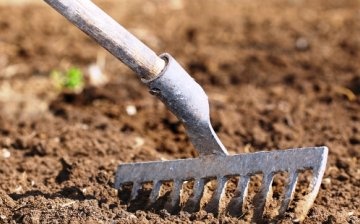

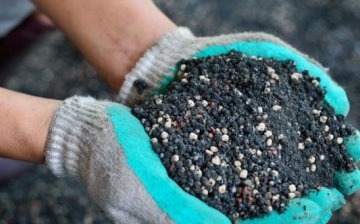
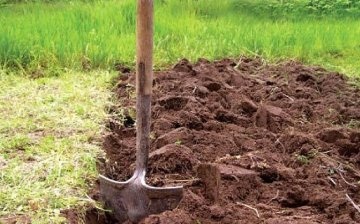







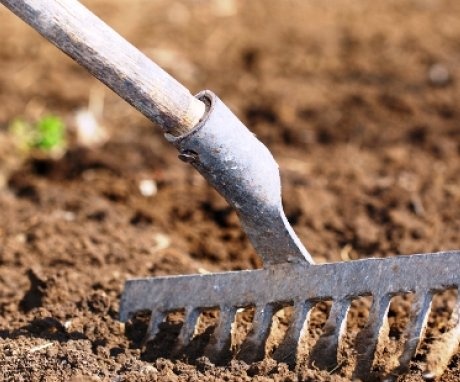

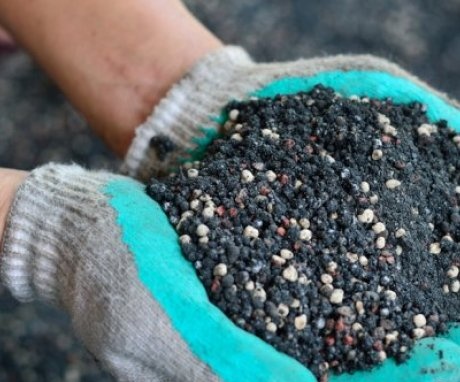
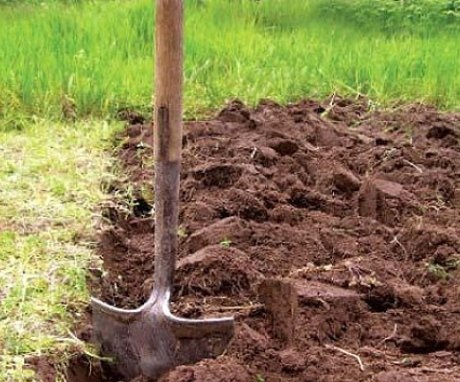
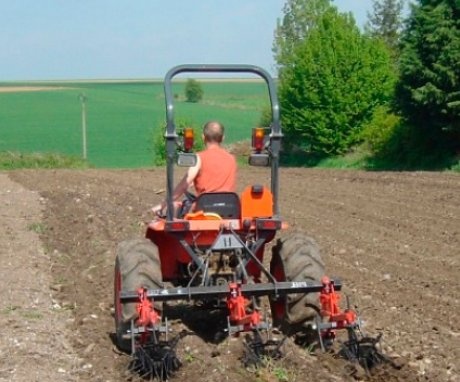
We dig up the soil for growing potatoes twice, in autumn and spring. Using a rake, we loosen it and remove the roots of the weeds. We apply fertilizers in the spring and during the growth of potatoes, and, we use only organic matter.